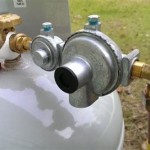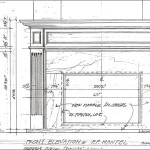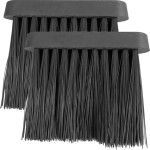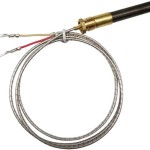Installing Glowing Embers In A Gas Fireplace
The addition of glowing embers to a gas fireplace can significantly enhance its aesthetic appeal, creating a more realistic and inviting ambiance. While gas fireplaces offer convenience and efficiency, they often lack the natural look of a traditional wood-burning fireplace. Glowing embers bridge this gap, mimicking the flickering glow and warmth associated with burning wood. This article provides a comprehensive guide to installing glowing embers in a gas fireplace, covering the necessary preparations, steps involved, and safety considerations.
Before initiating the installation process, it is crucial to determine the type of glowing embers suitable for the specific gas fireplace model. Embers are generally made of ceramic fibers or vermiculite and are treated with a special coating that reacts to heat, producing a luminous glow. The fireplace manufacturer's instructions should always be consulted to ensure compatibility and safety. Using the wrong type of embers can lead to inefficient burning, damage to the fireplace components, or even hazardous situations.
It is also important to gather the essential tools and materials for the installation. These typically include gloves, a screwdriver (depending on the fireplace model), a vacuum cleaner or brush, and the chosen glowing embers kit. Prior to beginning the installation, ensure the gas supply to the fireplace is completely shut off. This is a critical safety measure to prevent gas leaks or explosions during the installation process.
Preparing the Fireplace for Embers
The first step in installing glowing embers involves preparing the fireplace. This includes cleaning the burner area to remove any existing debris, dust, or old ember remnants. A vacuum cleaner or brush can be used to thoroughly clean the area around the burner. This step ensures that the new embers will properly interact with the flame and produce the desired glowing effect. A clean surface also helps to prevent uneven burning and buildup of soot or carbon deposits.
It is also important to inspect the burner itself for any signs of damage or corrosion. If any issues are identified, it is recommended to consult with a qualified technician to address the problem before proceeding with the ember installation. A properly functioning burner is essential for safe and efficient operation of the fireplace.
Depending on the fireplace model, there may be existing artificial logs or rocks that need to be rearranged or repositioned. These elements often serve to direct the flame and distribute heat. Refer to the manufacturer's instructions for the recommended placement of these components. Incorrect placement can obstruct the flame, reduce the glowing effect of the embers, or even create a fire hazard.
Once the area is clean and any existing components are properly positioned, the fireplace is ready to receive the glowing embers. It's imperative that the fireplace is cool to the touch before handling any of its internal components.
Distributing the Glowing Embers
The key to achieving a realistic glowing effect lies in the proper distribution of the embers around the burner. The embers should be arranged loosely and strategically, allowing the flames to make direct contact with them. Avoid clumping the embers together or covering the entire burner surface. This can restrict airflow and hinder the combustion process.
The ideal placement involves scattering the embers around the front and sides of the burner, creating a natural-looking bed of glowing material. In some cases, it may be beneficial to layer the embers, placing a few larger pieces at the bottom and smaller pieces on top. This can create a more varied and realistic appearance.
It is generally recommended to avoid placing embers directly on top of the burner ports. This can block the gas flow and lead to incomplete combustion, resulting in soot and carbon monoxide buildup. The goal is to allow the flames to dance around the embers, creating a vibrant and flickering glow without obstructing the burner's functionality.
The quantity of embers used will depend on the size and design of the fireplace. It is best to start with a small amount and gradually add more until the desired glowing effect is achieved. Overcrowding the burner with embers can diminish the effect and potentially create safety issues.
After distributing the embers, take a moment to visually inspect the arrangement from different angles. Ensure that the embers are evenly distributed and that they appear natural and aesthetically pleasing. Adjust the placement as needed to achieve the desired look.
Testing and Safety Considerations
Once the embers are installed, it is essential to test the fireplace to ensure proper operation and safety. Carefully turn the gas supply back on and ignite the fireplace according to the manufacturer's instructions. Observe the flame pattern and the glowing effect of the embers.
The flames should be blue with yellow tips and should evenly contact the embers. If the flames are predominantly yellow or orange, it may indicate incomplete combustion, which can produce carbon monoxide. In this case, immediately shut off the gas supply and consult a qualified technician to inspect the burner and gas lines. Possible causes for a yellow or orange flame include a dirty burner, insufficient airflow, or a gas pressure issue.
Ensure that the glowing embers are producing a consistent and vibrant glow. If some embers are not glowing or are glowing unevenly, adjust their placement slightly to improve their contact with the flame. It may also be necessary to replace embers that are old or damaged, as their ability to glow will diminish over time.
It is crucial to never leave a gas fireplace unattended while it is operating. Always supervise the fireplace and ensure that there are no flammable materials nearby. Children and pets should be kept a safe distance from the fireplace to prevent burns or other injuries.
Regular maintenance is essential for the safe and efficient operation of a gas fireplace. This includes periodically cleaning the burner and surrounding area to remove any debris or soot buildup. It is also recommended to have the fireplace inspected annually by a qualified technician to ensure that all components are functioning properly and that there are no gas leaks or other safety hazards.
The installation of glowing embers in a gas fireplace is a relatively straightforward process that can significantly enhance its aesthetic appeal. By following these guidelines and prioritizing safety, homeowners can enjoy the warmth and ambiance of a realistic-looking fireplace without the hassle and mess of a traditional wood-burning fire.
Remember to always consult the fireplace manufacturer's instructions for specific recommendations regarding the use of glowing embers and other accessories. This will ensure that the fireplace operates safely and efficiently, providing years of enjoyment.
Proper ventilation is paramount when operating a gas fireplace. Ensure the room is adequately ventilated to prevent the buildup of carbon monoxide. A carbon monoxide detector should be installed nearby as an added safety measure. Check and replace the batteries in the detector regularly.
If any unusual odors or sounds are detected while the fireplace is operating, immediately shut off the gas supply and contact a qualified technician. Ignoring such warning signs can lead to serious safety hazards.
By adhering to these safety precautions and following the recommended installation procedures, homeowners can safely and effectively enhance the beauty and realism of their gas fireplace with glowing embers.

Glowing Embers In A Fireplace Magic Touch Mechanical

Glowing Embers For Fireplace Mother Daughter Projects

Glowing Embers For Fireplace Mother Daughter Projects

Glowing Embers For Fireplace Mother Daughter Projects

Add Glowing Embers To Your Gas Fireplace

Add Glowing Embers To Your Gas Fireplace

Gas Fireplace Embers Friendly Fires

Add Glowing Embers To Your Gas Fireplace

Gas Log Replacement Elegant Fiber Glowing Embers Rock Wool 4 Oz Bag New Gef100

Fireplace How To Using Ember Materials On A Gas
Related Posts








